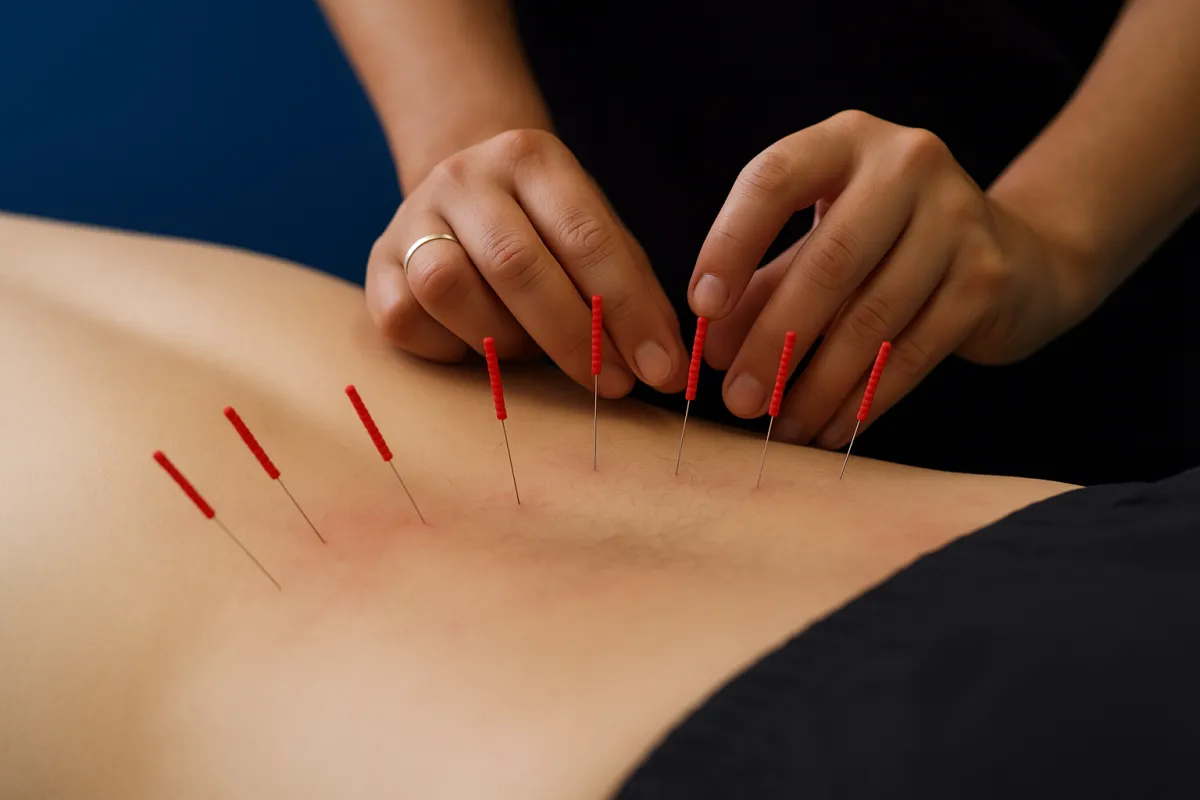
Dry Needling vs Massage Therapy | Pain Relief Guide
If you’ve been dealing with muscle pain, stiffness, or limited mobility, you’ve probably thought about trying dry needling or massage therapy. Both are designed to ease muscle tension and improve how your body feels, but they work in very different ways.
Knowing the differences can help you figure out which treatment makes the most sense for your body and your goals.
What Is Dry Needling?
Dry needling uses very thin, sterile needles placed directly into trigger points—those painful knots you can sometimes feel in your muscles. When the needle hits the right spot, the muscle often “twitches.” That twitch means the muscle is releasing tension.
The goal is simple: reduce pain, loosen stiff muscles, and restore movement. Many people notice results right away, especially if it’s done as part of a physical therapy plan.
Quick facts about dry needling:
Targets specific trigger points
Helps with deep muscular pain and chronic tightness
Often part of physical therapy or injury rehab
Can quickly improve mobility
Dry needling is usually performed by physical therapists, chiropractors, or other trained healthcare providers.
What Is Massage Therapy?
Massage therapy is hands-on treatment that works on your muscles, tendons, and fascia. The main goals are to improve circulation, reduce tension, and promote relaxation. Unlike dry needling, which targets small points, massage usually works on larger muscle groups.
Common massage types include:
Swedish massage: gentle, full-body relaxation
Deep tissue massage: works into deeper layers of muscle
Sports massage: helps with recovery and injury prevention
Trigger point therapy: applies pressure to knots in muscles
Massage is provided by licensed massage therapists and can be part of both pain management and overall wellness routines.
Dry Needling vs. Massage: Key Differences
Dry needling uses thin, solid needles to target specific trigger points deep within muscles, while massage therapy relies on hands, elbows, or tools to treat larger muscle groups and soft tissue. Dry needling provides precise, deep muscle insertion performed by a physical therapist, chiropractor, or doctor, often causing a brief twitch response or mild soreness. Massage therapy, done by a licensed massage therapist, focuses on pressure, relaxation, and easing muscle aches. Dry needling sessions are shorter (about 15–30 minutes) and aim for pain relief and better mobility, while massage sessions last longer (30–90 minutes) to promote relaxation, circulation, and reduced tension.
When Dry Needling Works Best
Dry needling is usually a good fit if you have:
Chronic muscle pain that doesn’t go away with stretching or massage
Sharp, pinpoint pain caused by trigger points
Limited mobility from muscle tightness
An injury you’re rehabbing with a physical therapist
It’s often recommended for conditions like:
Low back pain
Neck and shoulder stiffness
Tension headaches
Sciatica
IT band tightness
When Massage Therapy Works Best
Massage therapy is the better option if you:
Want to reduce overall tension and stress
Prefer a non-invasive, manual approach
Are recovering from heavy workouts or sports
Experience full-body soreness or fatigue
Want a routine therapy for long-term wellness
Massage can also help with:
Muscle recovery and fatigue
Stress-related tension headaches
Better sleep and reduced anxiety
Improved circulation and lymphatic flow
Still wondering if Dry Needling or Massage is right for you?
Tired of muscle pain holding you back? At Body Solutions PT, our dry needling therapy targets tight muscles and trigger points to restore movement, relieve pain, and boost performance. Don’t settle for temporary relief—book your dry needling session today and feel the difference.
Can You Combine Both?
Yes — and many people do. Dry needling can release the toughest knots, while massage helps calm the surrounding muscles and improve blood flow. Doing both (sometimes in the same week, or even the same day with your therapist’s approval) can give you the best of both worlds.
Frequently Asked Questions
Is dry needling or massage better for tight muscles?
Dry needling is best for stubborn knots deep in the muscle. Massage is better for general tension and overall muscle relaxation.
Does dry needling hurt more than massage?
Dry needling can cause quick twitches and mild soreness. Massage usually feels more relaxing, though deep tissue massage can also be intense.
Can you get dry needling and massage on the same day?
Yes, but ask your provider first. Many people benefit from dry needling followed by massage to ease soreness.
Which gives faster results?
Dry needling often works faster for specific pain. Massage may take a few sessions but is great for long-term stress and muscle balance.
Who should avoid these treatments?
People with bleeding disorders, infections, or certain health conditions should check with their doctor before trying either one.
Bottom Line
Dry needling and massage therapy both help with pain, but they serve different purposes. Dry needling is highly targeted and often provides fast relief for deep, stubborn muscle knots. Massage therapy takes a broader approach, helping your whole body relax while supporting recovery and circulation.
If you’re not sure which to choose, talk to your physical therapist or doctor. In many cases, a mix of both can give you the best results.


Facebook
LinkedIn